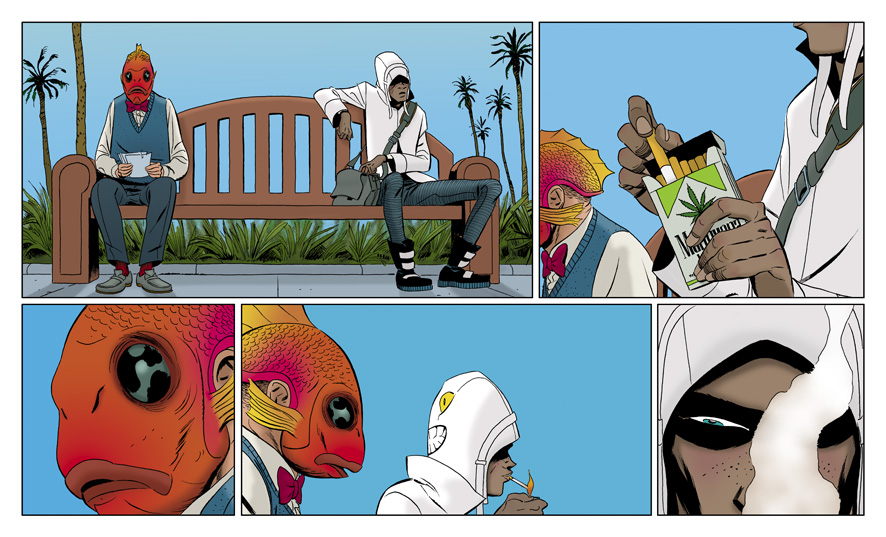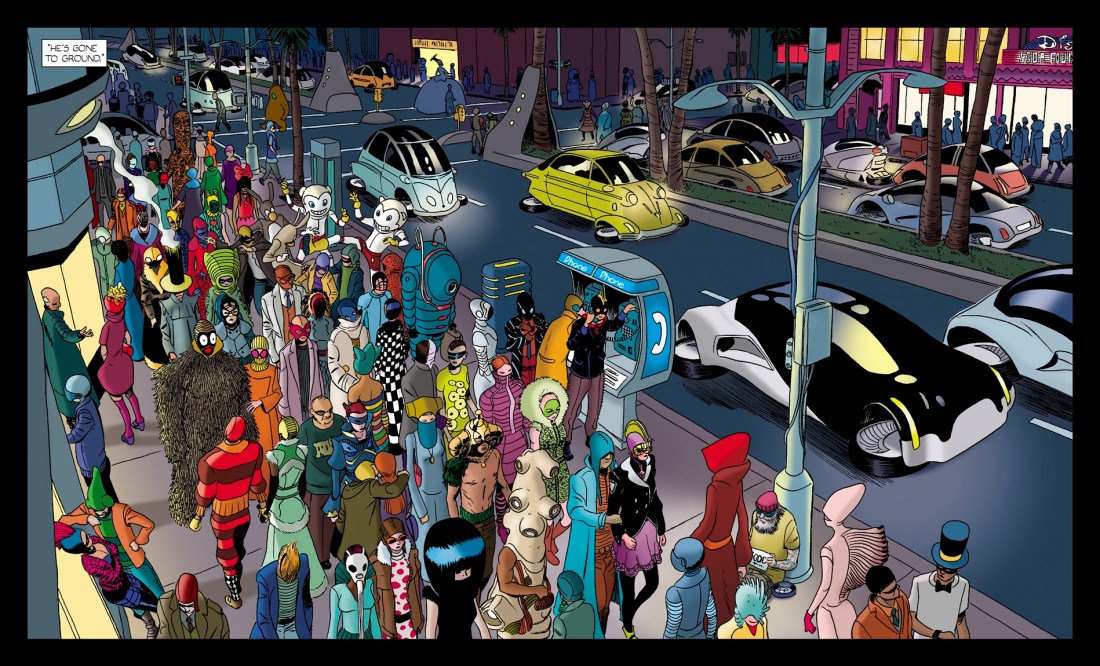
I saw a few people looking comic up while in class so I think some other people might write about it to, but screw it this was the first thing I thought of and it’s by a writer I love, so let’s talk about it. I think for the syllabus you should add The Private Eye. The Private Eye is a comic published online in 2013 and 2014, the premise is that at some point in the not too distant future the “cloud” has burst and released everyone’s data, from personal information, to every text message you’ve ever sent, to your entire internet search history. The internet collapses and technology falls into this weird space between past and future. Everyone hides their identity in public, wearing masks and much more technologically sophisticated disguises, while much of pre digital technology comes back.
The first reason you should use this comic is because it is really good. It is written by Brian K. Vaughn one of the best writers in comics and drawn by Marcos Martin a really great and unique artist. While this isn’t really close to being either’s best work they are the type of talents that warrant at least checking out whatever they have worked on.
The second reason is that it thematically ties into a lot of what we’ve been talking about in class. The cloud bursting for example leads to a world where we know everything about a person, you could talk about the parallels between the cloud bursting and the Circle completing. It would also be interesting to discuss if the future the novel presents could be the future of the world after the Circle completes. Since everyone’s information became available online the place we became anonymous was in public.
There is also an element of nostalgia that can tie the novel to Ready Player One with technology having caused such a disaster people move back to older forms of listening to music, through vinyl and cassettes as streaming services and digital files have imploded, and television becoming the main form of entertainment again.
The best part is the comic is entirely “pay what you want” so it can be purchased for free, making it very convenient for you and your future students. I’ll link to the page below.
http://panelsyndicate.com/comics/tpeye
